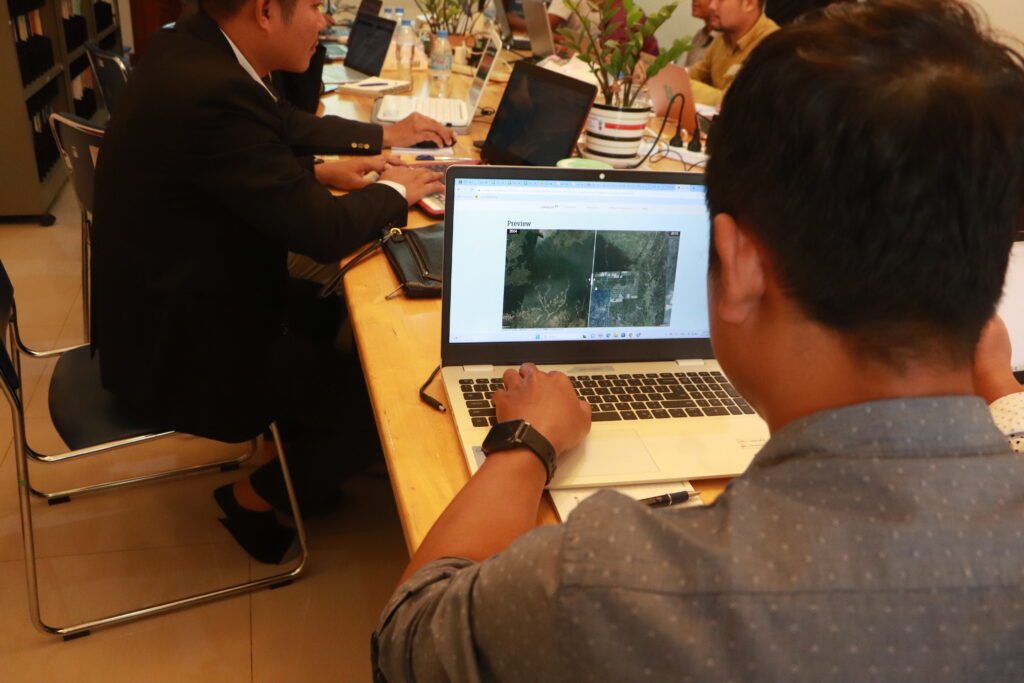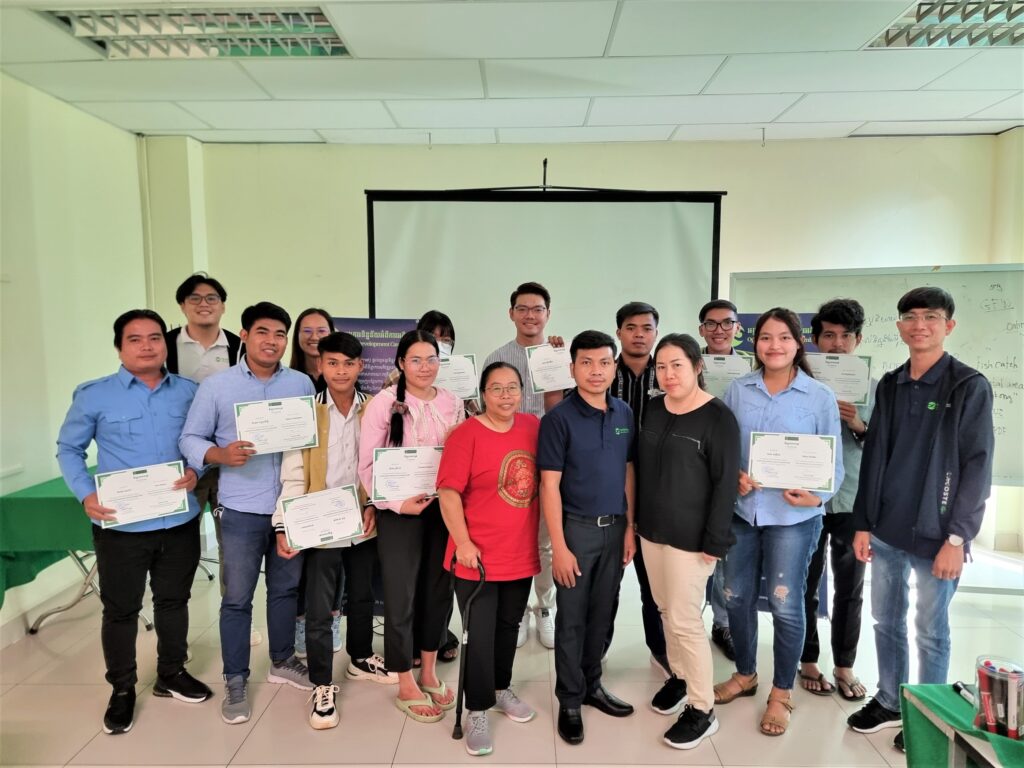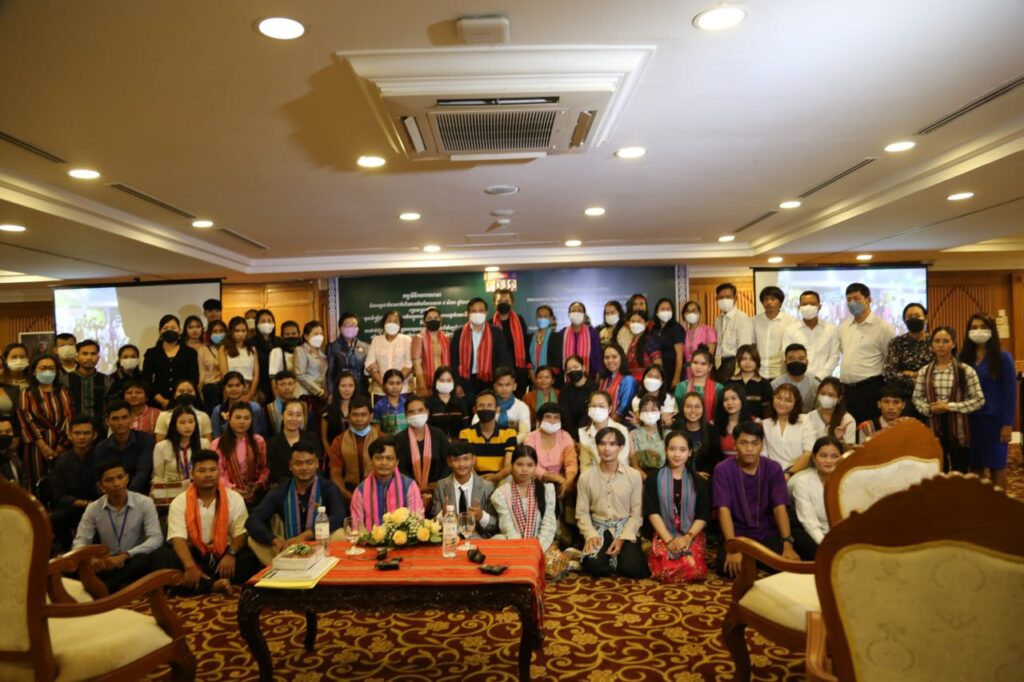- Learning Platform
- Blog
- Indigenous peoples sectoral advisory meeting
On 08 February 2023, ODC organized the “Indigenous Peoples Sectoral Advisory Meeting” with the partners, including Conserve Indigenous Peoples Languages Organization, MyVillage Cambodia – MVi អង្គការ ភូមិខ្ញុំ, Forests and Livelihood Organization FLO, Cambodia Indigenous Youth Association-CIYA, and FHI 360 to identify the challenges, activities, roles of the group, and call for new members.
The project is funded by USAID Cambodia through FHI 360 under Cluster Anchor Grant from the Civil Society Support (CSS) Project.



Other Stories
Data visualization training in journalism
On September 11th, 2023, Open Development Cambodia (ODC) conducted an enriching training session titled \"Data visualization in journalism,\" attended by a group of 14 journalists (2 females) from various locations such as Phnom Penh, Kratie, Siem Reap, Battambang, Stung Treng, and Mondulkiri. With our \"Data visualization in journalism\" training, the trainees can embark on a transformative journalistic journey that explores the intersection of data and narrative. Data visualization, the art of transforming raw data into compelling visuals, is more than a skill; it\'s a narrative accelerator. In an age when information bombards our senses, journalists with data visualization skills gain the ability to change complex datasets, transforming them into impactful graphs, interactive charts, and dynamic maps that bring stories to life. This course provides an opportunity to seamlessly combine journalistic skills with data-driven precision, unleashing the potential of visual storytelling to captivate, inform, and inspire. The training aims to equip journalists with the skills to integrate visual elements into their storytelling, enabling them to convey information, engage audiences, and unveil deeper narratives through impactful and accessible graphics. The primary objective of this training initiative is to equip journalists with the proficiency to incorporate visual elements into their narratives. By doing so, they acquire the ability to convey information effectively, engage their audiences, and unveil deeper layers of the narrative through compelling and easily comprehensible graphics. The comprehensive training program explored data comprehension, the principles of data interpretation, the art of chart design, and an introduction to the powerful data visualization tool, Datawrapper. Despite the constraints of time, the participating journalists displayed remarkable adaptability and tenacity, successfully producing visualizations and integrating them into their stories. These hardworking trainees exhibited a worthy commitment to learning this new tool and the concepts surrounding it. Their dedication resulted in the creation of 14 interactive visualizations, each addressing a diverse selection of topics using Datawrapper. While it is acknowledged that their efforts may not yet be considered professional, it is evident that they have acquired a fundamental understanding of how to develop visualizations that enhance their news articles. Furthermore, it notes that the majority of these participants have expressed a strong desire for additional training sessions. They are eager to extend the duration of training and remain enthusiastic about staying updated with the latest data and visualization techniques. These aspirations reflect their solid commitment to enhancing their capacities as journalists and their dedication to delivering high-quality journalistic content to their respective audiences. The project is funded by USAID Cambodia through FHI 360 under a Cluster Anchor Grant from the Civil Society Support (CSS) Project.
- Access to informationData literacy trainingTraining
- 04 Oct 2023
- 2118
Data visualization and storytelling training
Open Development Cambodia (ODC) hosted a training on \"Data visualization and storytelling\" on December 20-21 and 26, 2022, with 24 participants, including journalists, citizen journalists, indigenous youth journalists, journalism students, and CSOs. People with disabilities and LGBTQIA+ are encouraged to join. This training was divided into two parts. The first stage was a two-day online training that included lessons and exercises. The second phase was a one-day physical training session focused on recapping the entire training and exercises. This training was funded by USAID Cambodia through FHI 360 as part of the Civil Society Support (CSS) Project\'s Cluster Anchor Grant. Day 01: Understanding data Before the session began, an ODC representative made a welcoming remark about the project and an introduction to help the attendees get to know one another. Following that, the participant spent time preparing for the pre-test, which was used to assess their capacity before the program began. Mr. Vong Pisith, the trainer, began the lesson on understanding data to provide insight into the importance of data, the different types of data and information, and the transparency of open data. After everyone understood the data well, the trainers demonstrated how to find it using the data portal and Google advanced search. The participants were then given an exercise by finding their needs data in PDF format and other natural resource data on the ODC portal. The trainer, Mr. BAN Chanphalla, then moved on to the next lesson on data standardization, which instructed the participants about data standards and how to format their data before diving into data visualization. The participants were introduced to the function of creating a new spreadsheet, adding sheets, making a copy, columns, and rows, inserting charts, filtering, and pivoting tables on google sheets, as well as importing comma-separated values (CSV) files into the spreadsheet and Microsoft Excel. The trainers also illustrated the data clean as a significant part of the data analysis. This lesson explained why we need to clean data and introduced them to a method for cleaning data to make it legible by introducing techniques such as trimming whitespace, removing duplicates, formatting text, splitting columns, data validation, and finding and replacing. Day 02: Data visualization On the second training day, the trainers took a few minutes to review the previous day\'s lesson before continuing with Mr. Sam An Mardy\'s agenda on data visualization principles. The trainer will introduce what motivated us to create the visualization, what exactly the data visualization is, how to tell a data-driven story, how to choose the right graph and chart type, and how to display it correctly. Mr. Vong Pisith then showed the participants a demonstration and examples of the Flourish. The participants then continue working on the group exercise to create the chart and graph with Flourish. Everyone took the post-test at the end of the second day and looked forward to the physical training on the third day. Day 03: Individual practice The agenda for the last day of training covered lesson reminiscence. Everyone attended the physical training and continued the lesson on data visualization with Flourish. The participants started learning how to make a map chart out of geographical data and how to incorporate those visualizations into the story. Then the participants were given the opportunity to practice it independently and complete the individual assignment by creating storytelling using data visualization. Finally, the trainees were asked to evaluate before closing remarks and provide the training certificates.
- Data literacy training
- 25 Jan 2023
- 915
Indigenous women seek direct help and support from all stakeholders on the International Day of the World’s Indigenous Peoples 2022
The United Nations marks 2022 as this year’s International Day of the World’s Indigenous Peoples under the theme “The Role of Indigenous Women in the Preservation and Transmission of Traditional Knowledge.” This theme recognizes how important and central women are in the longevity and survival of indigenous communities. Indigenous people living in Cambodia are 250,000 to 400,000 (51% of women), accounting for 2-3% of the Cambodian population. More than 155 indigenous communities have received official recognition from the Ministry of Rural Development (MRD). On 09 August 2022, Cambodia Indigenous Peoples Alliance (CIPA), Cambodia Indigenous Women Association (CIWA), Cambodia Indigenous Youth Association (CIYA), Cambodia Indigenous Peoples Organization (CIPO), Highlanders Association Ratanakiri, Converse Indigenous Peoples Languages Organization (CIPL), Organization for the Promotion of Kui Culture (OPKC), Indigenous People for Agriculture Development in Cambodia (IADC), Indigenous Rights Active Members (IRAM), and MIPN, in collaborating with Klahaan, Women Peace Makers, Asia Indigenous Peoples Pact (AIPP), and Open Development Cambodia (ODC) with the supports from United Nations Human Rights, VOICE, Diakonia, USAID, and FHI 360 celebrated the 18th International Day of the World’s Indigenous People in Cambodia. A total of 138 participants (approximately 90 females) joined the event. The indigenous groups opened the celebration with the indigenous traditional prayer as well as displayed their traditional materials, clothing, and vegetables. The celebration also included a traditional Kui dance and singing. This event was not only commemorating the International Day of the World’s Indigenous Peoples but also exhibiting indigenous peoples\' culture and beliefs. Role of indigenous women in the preservation and transmission of traditional knowledge In terms of culture and tradition, indigenous people have a strong relationship with natural resources, and women have knowledge of the land and natural resource conservation. The community offers their prayers to the woodland, forest, and mountain spirits. Women in the field must pass on the knowledge to the next generation to continue recognizing and protecting the forest. There must be a forest in the village, and it should be maintained to ensure food security as well as spiritual beliefs. Indigenous people teach the next generation about how the importance of forests. Currently, the livelihood of the indigenous people is not the same as before. If young indigenous people don’t involve with the elders, their land, forest, culture, livelihood, and language will be in a greater lost from generation to generation. The indigenous people’s agriculture is not destroying the forest as some say indigenous people cut the forest for agriculture. The forest loss is not the indigenous people’s fault; it is because of the development project that cleared the land. The community has been doing agriculture for many years before, but there is not any great forest loss. Challenges of indigenous women on the land and forest protection The indigenous people show their enthusiasm for protecting their land and forestry. They think that this is their obligation to protect the forest for their lives and their generation, who they love from the bottom of their heart. It is not only for the indigenous people but also for all Cambodian people. The front line of land and forest protectors are mostly women because most of the men only do their specific work. Although there are NGOs, CBOs, indigenous communities, etc., that support them, indigenous women still face several difficulties and problems. The family somehow does not encourage or support them to involve in those activities due to unexpected encounters with the company and government, which could harm them or the whole family. When there is a land dispute with the company, the communities might be hurt and get involved in the trial. The indigenous people claim that they receive injustice solutions or decisions from the court. For example, they could get into prison because they do the farming on their own land, where the land has been given to the company without their agreement. The local authorities do not act or find solutions for them, and they just keep silent. Therefore, the community has no choice. They could only pray to the spirits. Joints statement of the Cambodia Indigenous Peoples Alliance (CIPA) Women have an important role in indigenous societies, leading, managing, and protecting collective cultural identities, traditions, land, and natural resources for indigenous groups and communities. Indigenous women who take the lead in land and natural resource protection are frequently subjected to social threats, discrimination, and unfair legal application, which can result in lawsuits, imprisonment, family separation, poverty, a lack of personal security, and legal restrictions or prohibitions on land rights. CIPA, as the representative of all indigenous communities, calls on all indigenous women to continue their efforts to strengthen their capacity, network, and voice in all trends and mechanisms to ensure their full participation, leading, preserving, transferring traditional knowledge, and sustaining indigenous peoples\' development in accordance with the UN Declaration on the Rights of Indigenous Peoples. CIPA also seeks direct help and support from national and international organizations, governments, and courts for indigenous women. Simultaneously, indigenous peoples press the Ministry of Justice and judges to strengthen law enforcement and acknowledge legal rights that protect indigenous peoples\' rights to ensure that they, as victims, receive a fair trial.


